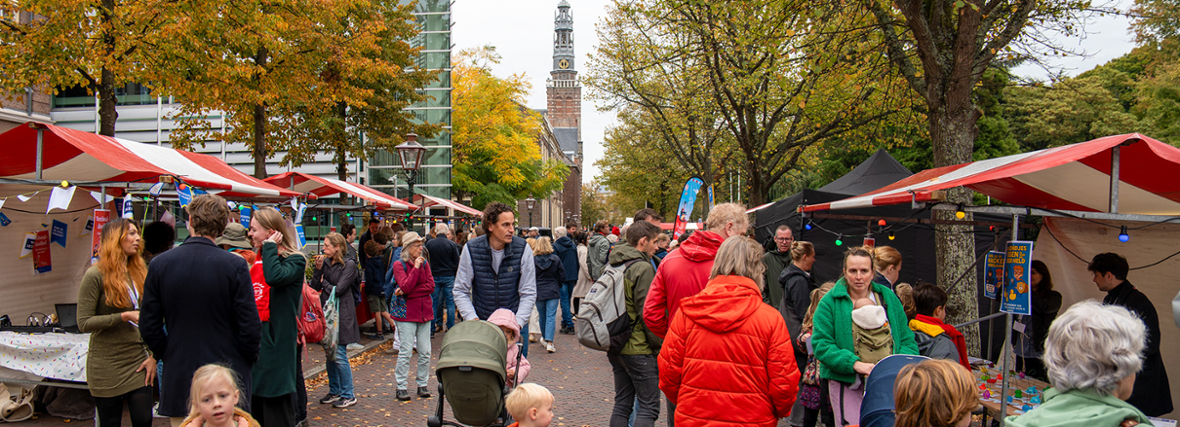
Hutspot, herring and... science: Community engagement with Leiden’s research at 3 October University
Leidens Ontzet image: Danique ter Horst
Amid the many traditions of Leiden’s 3 October Festival, a relative newcomer is beginning to take hold: the Science Market. At market stalls, the people of Leiden could explore or even participate in Leiden’s research – performing an ‘operation’ in the street, for example.
Armed with stamp cards, hundreds of visitors stroll past the science-packed 14 market stalls on Steenschuur, offering the chance to peer through a microscope, hear fun facts about cybersecurity and molecules, travel through time with pottery and much more.
-
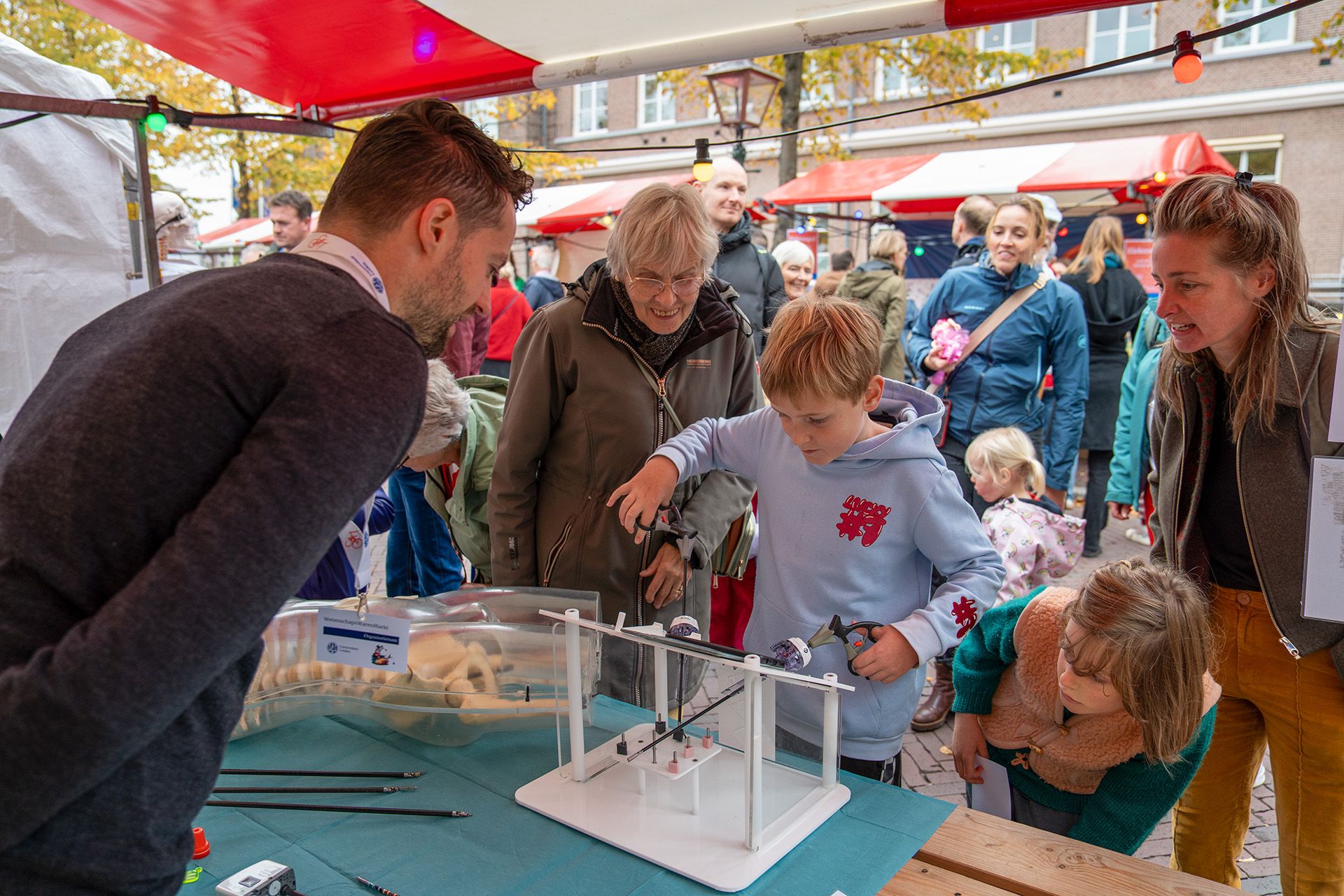
Operating with the aid of a screen. -
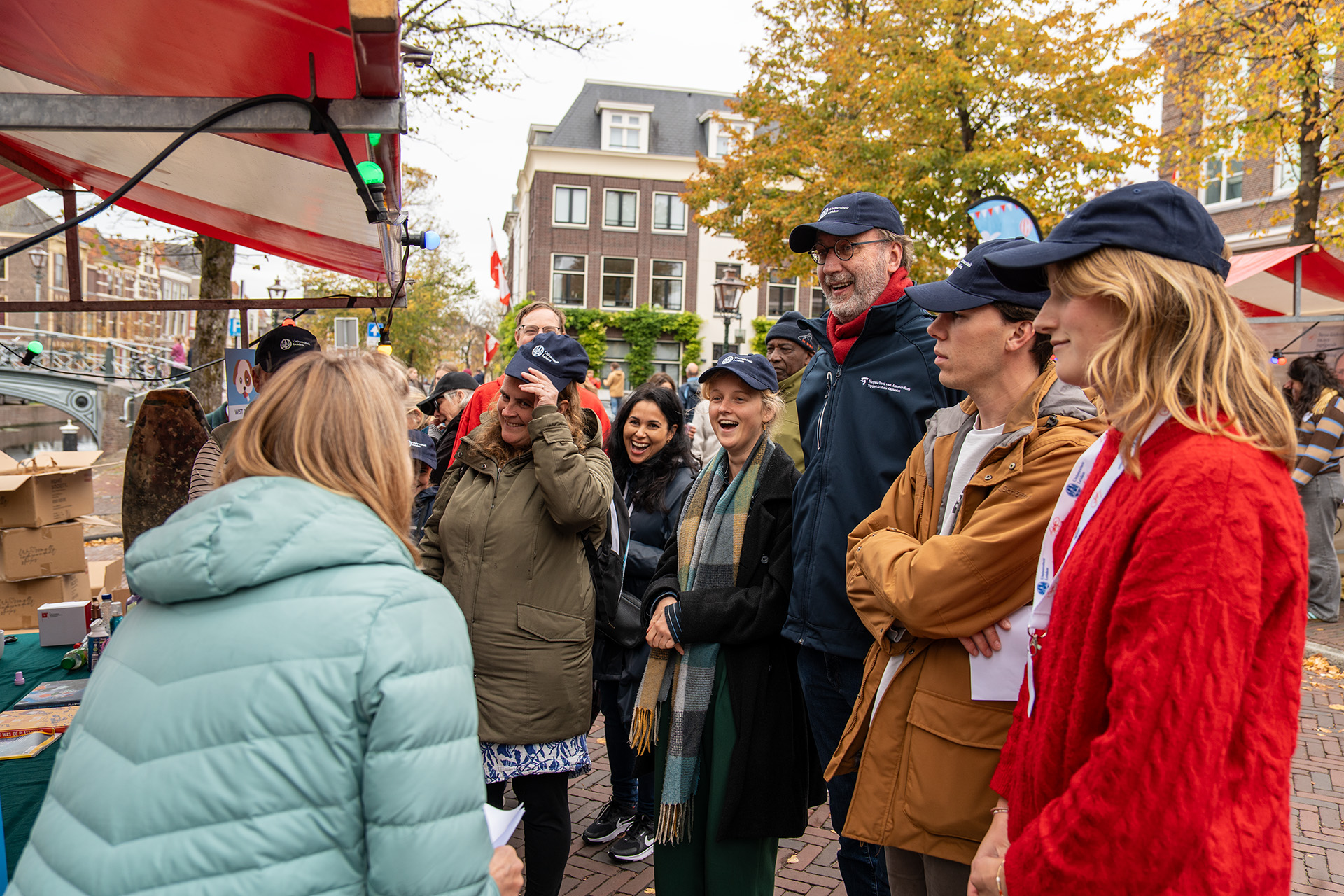
Visitors take a quiz about plastic pollution and laws. Researcher Esther Kentin: ‘Can you see the plastic soup from space?’ -
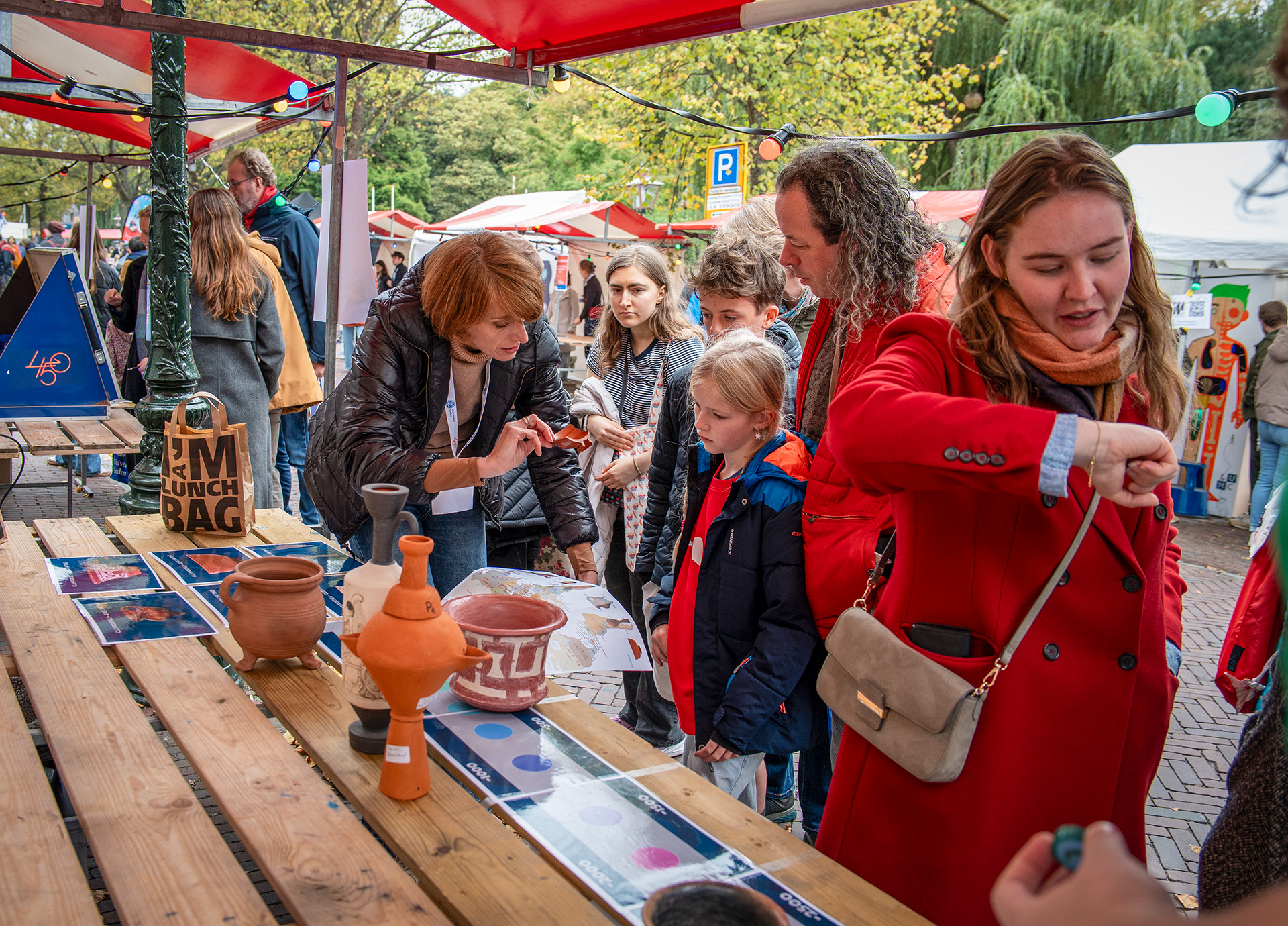
Which shard is the oldest? -
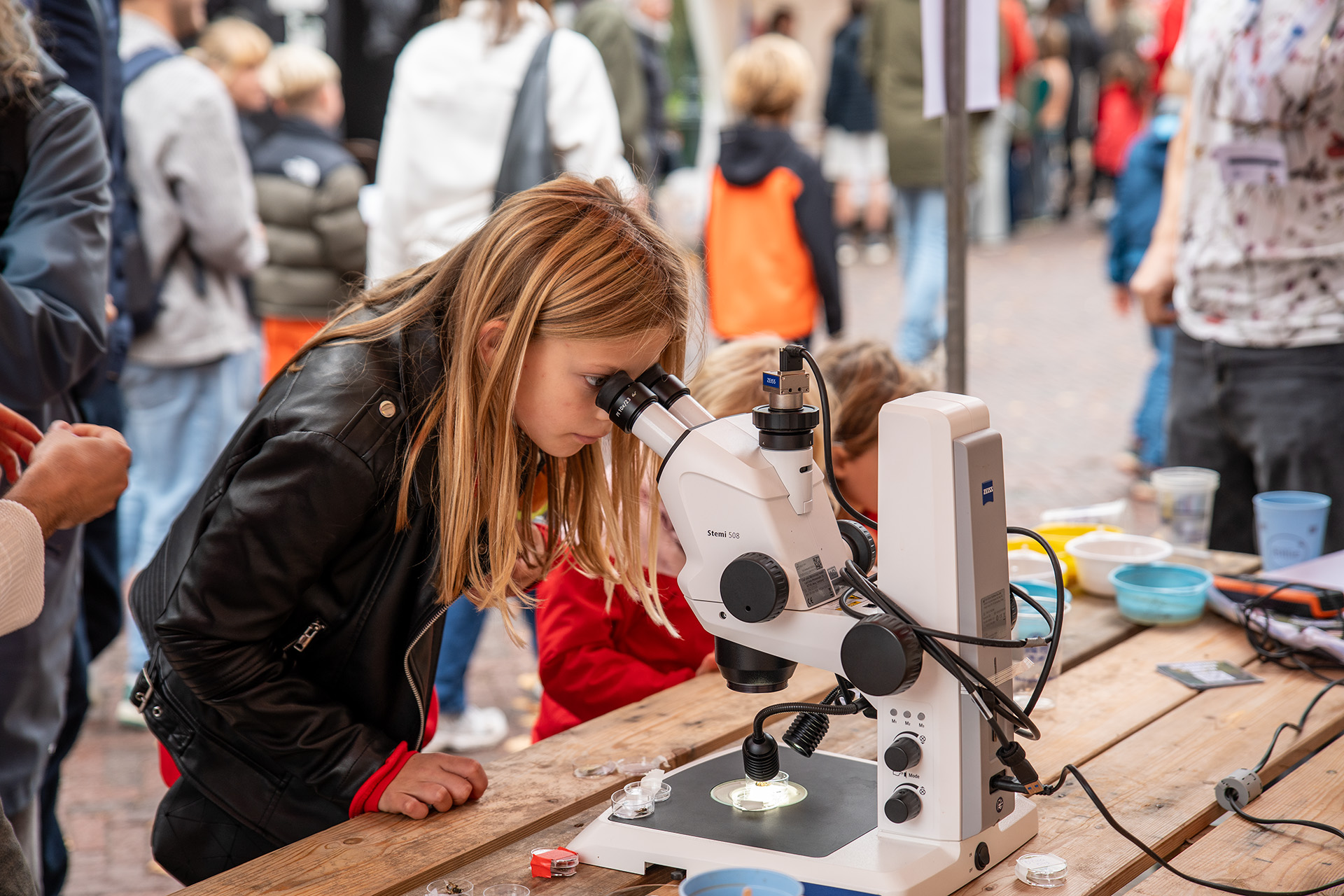
Peering through a microscope.
Operate like a surgeon
Sam (9) is concentrating as he performs an ‘operation’. Surgical forceps in his hand, he tries to move small objects visible only on his telephone screen. It takes a while to get the hang of it. ‘I had to twist my whole arm to reach it sometimes. It was hard, but fun.’ Whether it’s like a real operation, he doesn’t know. ‘I’ve never done a real operation.’
Sam is not the only one to find it hard, says Matthias van Oosterom from the LUMC’s IMIlab. ‘It’s hard to judge depth from a screen. We use this setup to show how surgeons operate through two small incisions. And how technology – like imaging or sick and healthy tissue recognition – helps us during operations.’
Ghost stories
In a black tent bearing the words ‘Donate your feelings to literary science’, brains hang from the ceiling and Evert Jan van Leeuwen sits reading a horror story by lamplight about a girl who is mistreated her cruel uncle and a monster dwelling in the nearby lake. Cathelijn’s son listens enthralled (though he quickly runs off blow big bubbles afterwards). ‘He said he didn’t find it scary, but I’m not so sure’, Cathelijn says. ‘He loved how the researcher used different voices. The researcher explained that if ghost stories were truly terrifying, we wouldn’t listen to them at all.’
Ghost stories may be a bit scary, but they also give you positive feelings, says literature researcher Van Leeuwen. ‘Children find the story I read funny or root for the monster because it’s like mythical beast and they think the uncle deserves to be eaten.’
Much research focuses on texts themselves – for example, on how the themes relate to the world around us – but little research focuses on why people read ghost and horror stories. Van Leeuwen has therefore started reading and talking to teenagers. ‘From our discussions, I’ve discovered that teenagers are drawn to dystopian literature for the relationships, hope and good.’
-
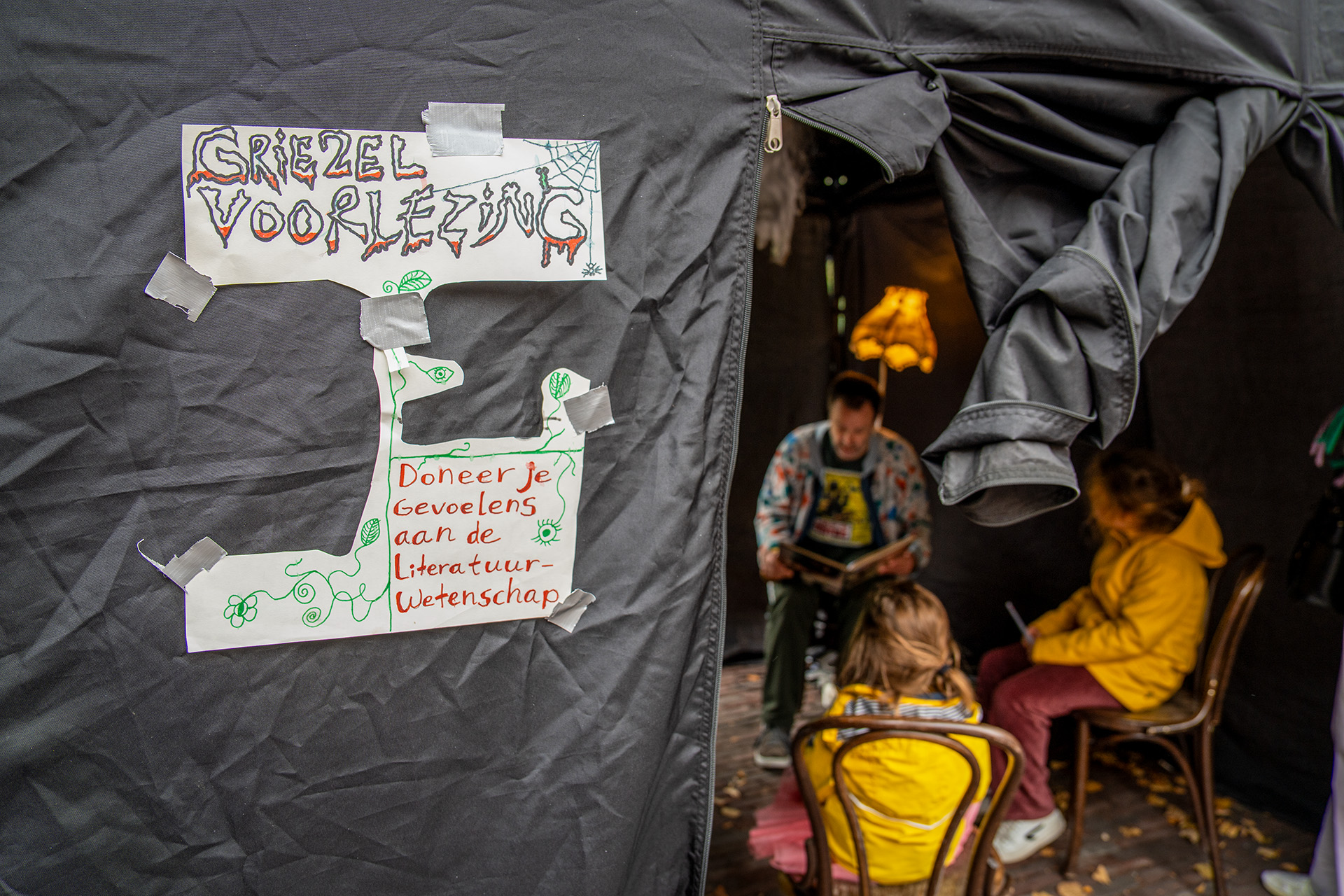
Researchers talk about the importance of being scared. -
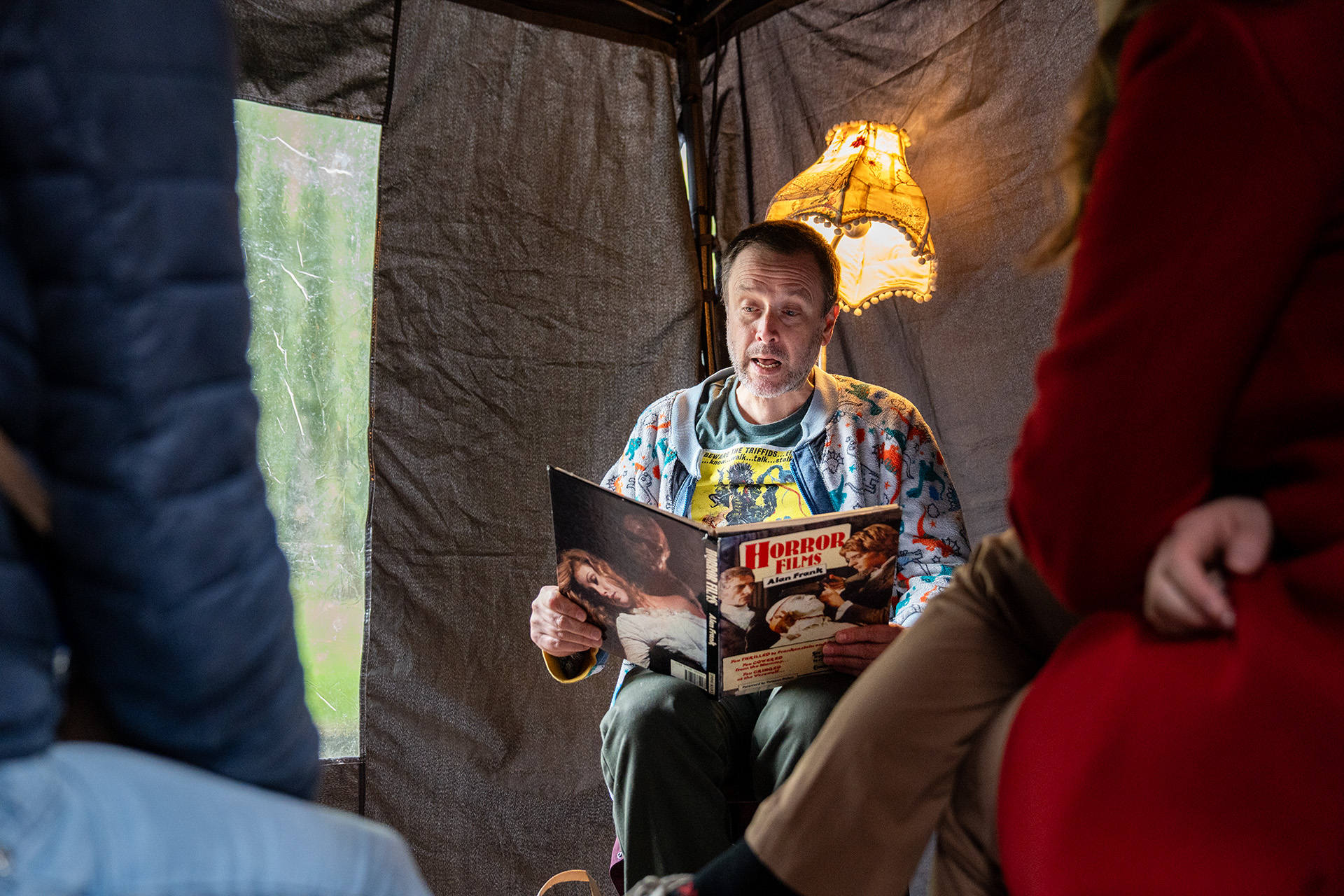
-
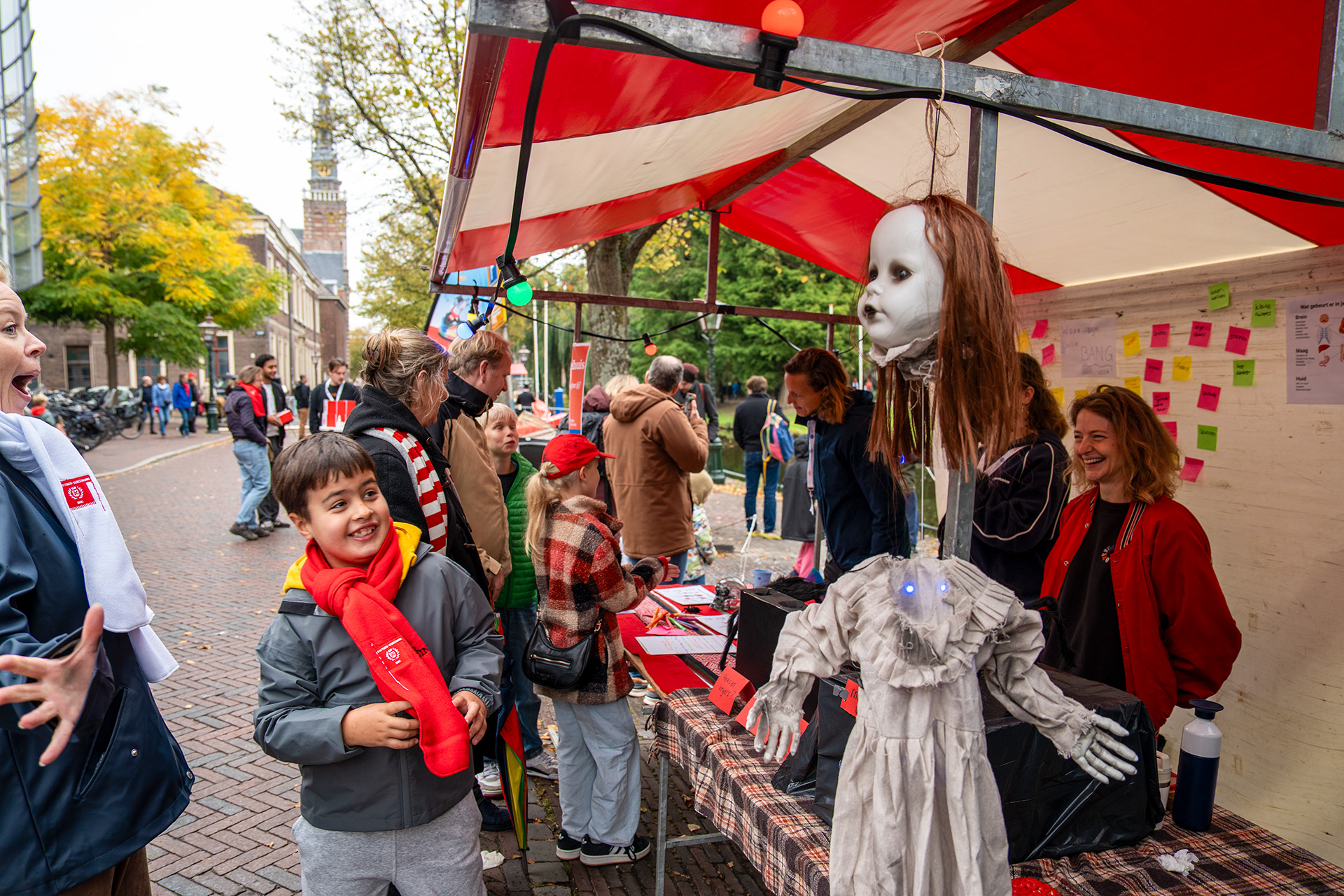
-
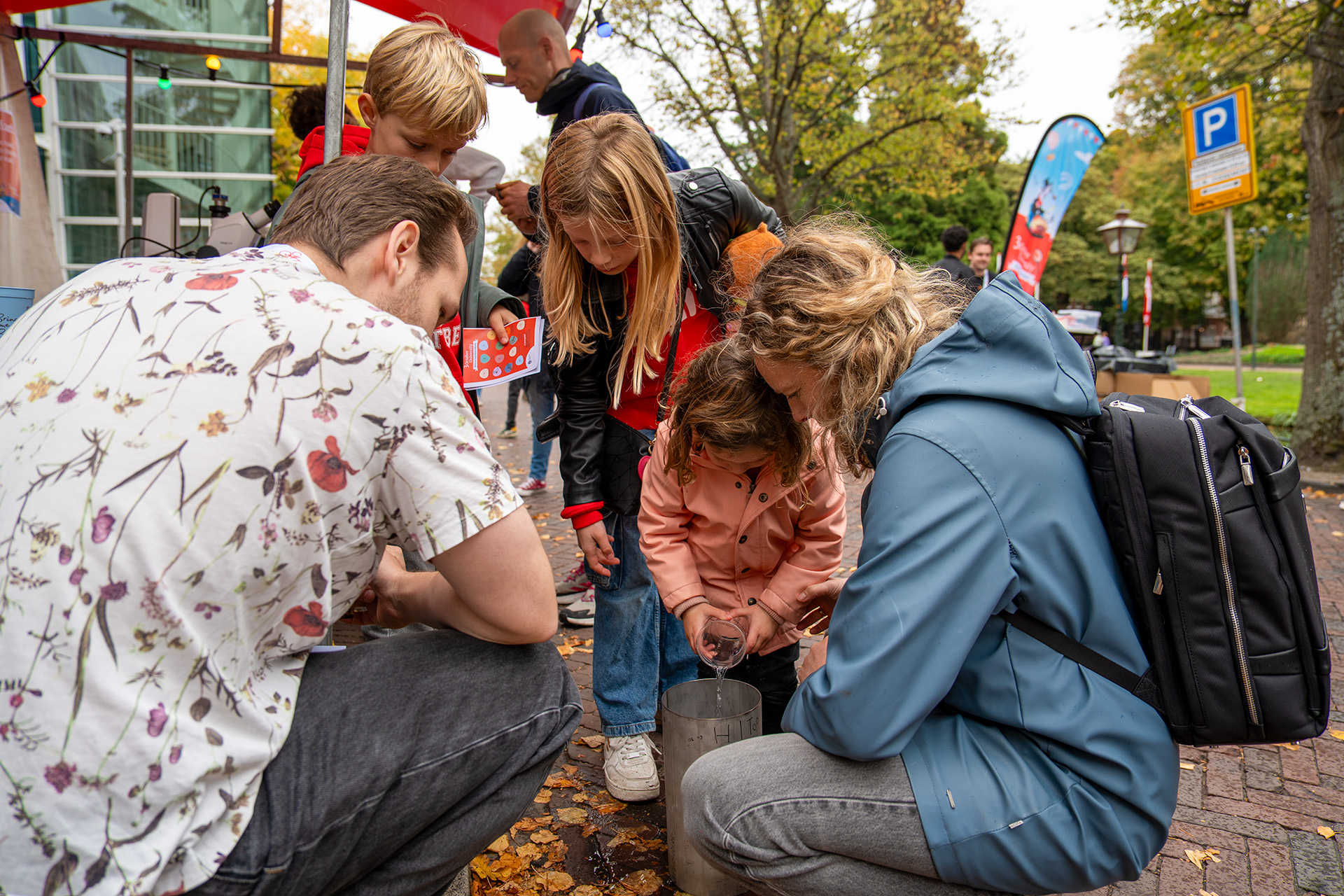
-
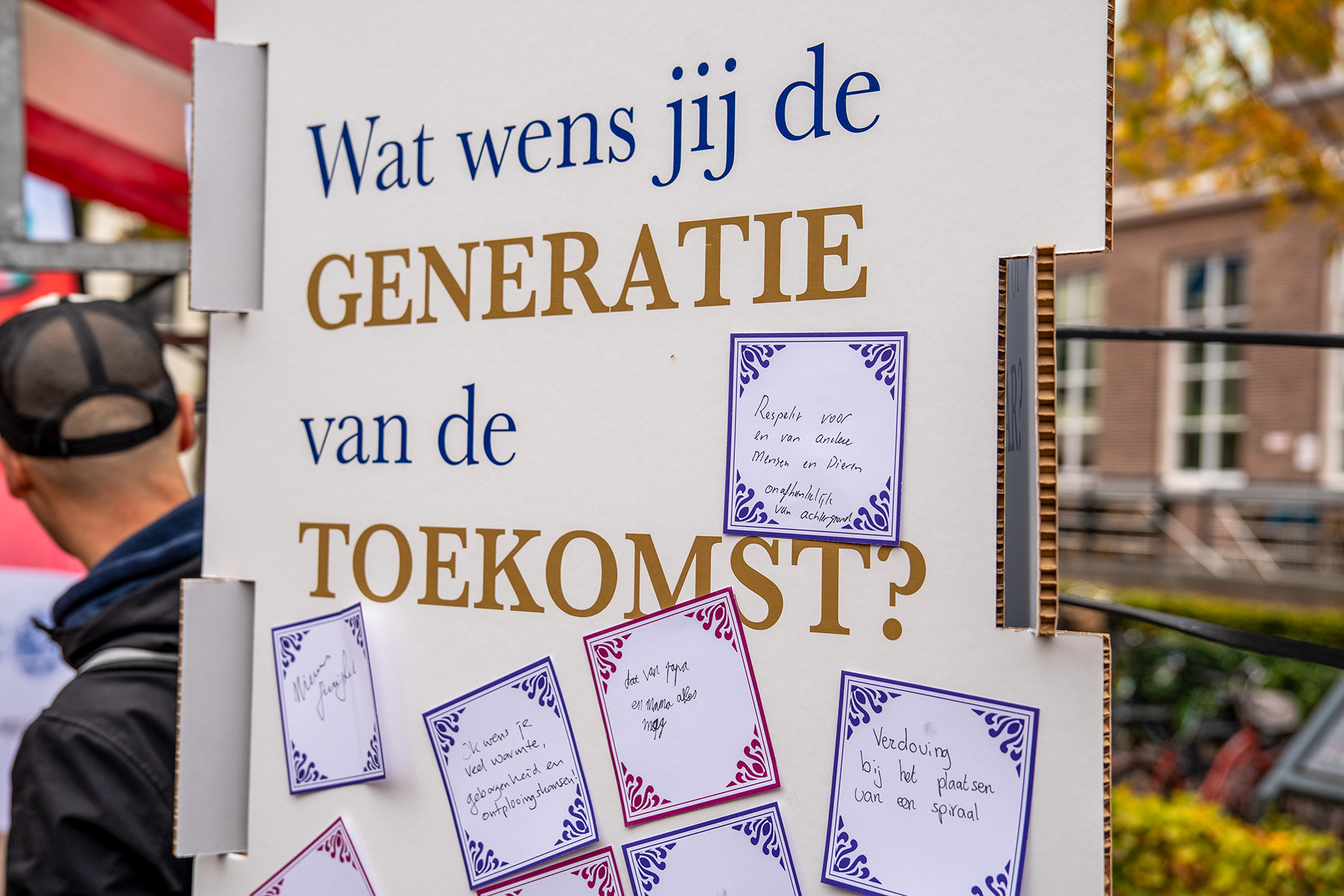
Always getting lost
Across from the horror tent, the stall about getting lost catches the attention of Carlijn, who has come to the market with her family. She’s always losing her way. ‘I heard them mention Developmental Topographical Disorientation (DTD) (severe difficulty with orientation, Ed.) and thought: that’s me. The researchers said that three per cent of people have it and can’t form maps. They gave me another test to take at home. I don’t know how it’ll help if I do find out I’ve got it.’
DTD research is being conducted to increase awareness and understanding, says Elaine Herkul, who is explaining the condition at the stall. DTD is not just getting lost. People who have it can even get lost on the way to work, despite having often cycled the route. ‘People’s reactions at the stall vary’, Herkul says. Some say: “I’m good at finding my way”. And children always snitch on their parents, saying: “My mum couldn’t find me in the school playground when I was waiting by the trees where we always meet.” It’s good to see that when people hear about DTD, they know there’s nothing wrong with them and that they’re not stupid. It’s to do with their brains. And there are tips and tricks that can help, such as using points of recognition.’
Join us next year
If you a researcher at Leiden University and you would like to have a stall at next year’s Science Market, contact science adviser Saskia van Reenen.
